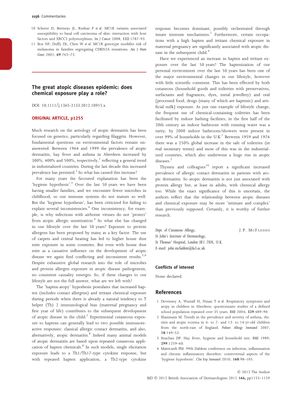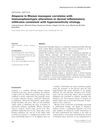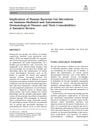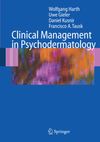The Great Atopic Diseases Epidemic: Does Chemical Exposure Play a Role?
May 2012
in “
British Journal of Dermatology
”

TLDR Chemical exposure may contribute to the rise in atopic diseases and needs more research.
The article from 2012 discusses the significant increase in the prevalence of atopic diseases such as atopic dermatitis, hay fever, and asthma in industrialized countries, with increases of 300%, 400%, and 500% respectively between 1964 and 1999 in Aberdeen. The 'hygiene hypothesis' has been the favored explanation, suggesting that reduced exposure to microbes due to smaller families and cleaner environments leads to poorly developed immune systems. However, inconsistencies in this hypothesis have led researchers to consider other factors, such as exposure to protein allergens and haptens. The 'hapten-atopy' hypothesis is introduced, suggesting that increased exposure to haptens and irritant chemicals during pregnancy and early life may contribute to the development of atopic diseases. The article highlights the significant increase in the use of chemical-containing products over the past 50 years, which correlates with the rise in atopic diseases. It also references a study by Thyssen and colleagues that found a higher prevalence of allergic contact dermatitis in patients with atopic dermatitis, suggesting a complex relationship between chemical exposure and atopic diseases. The article concludes that this relationship warrants further research.




